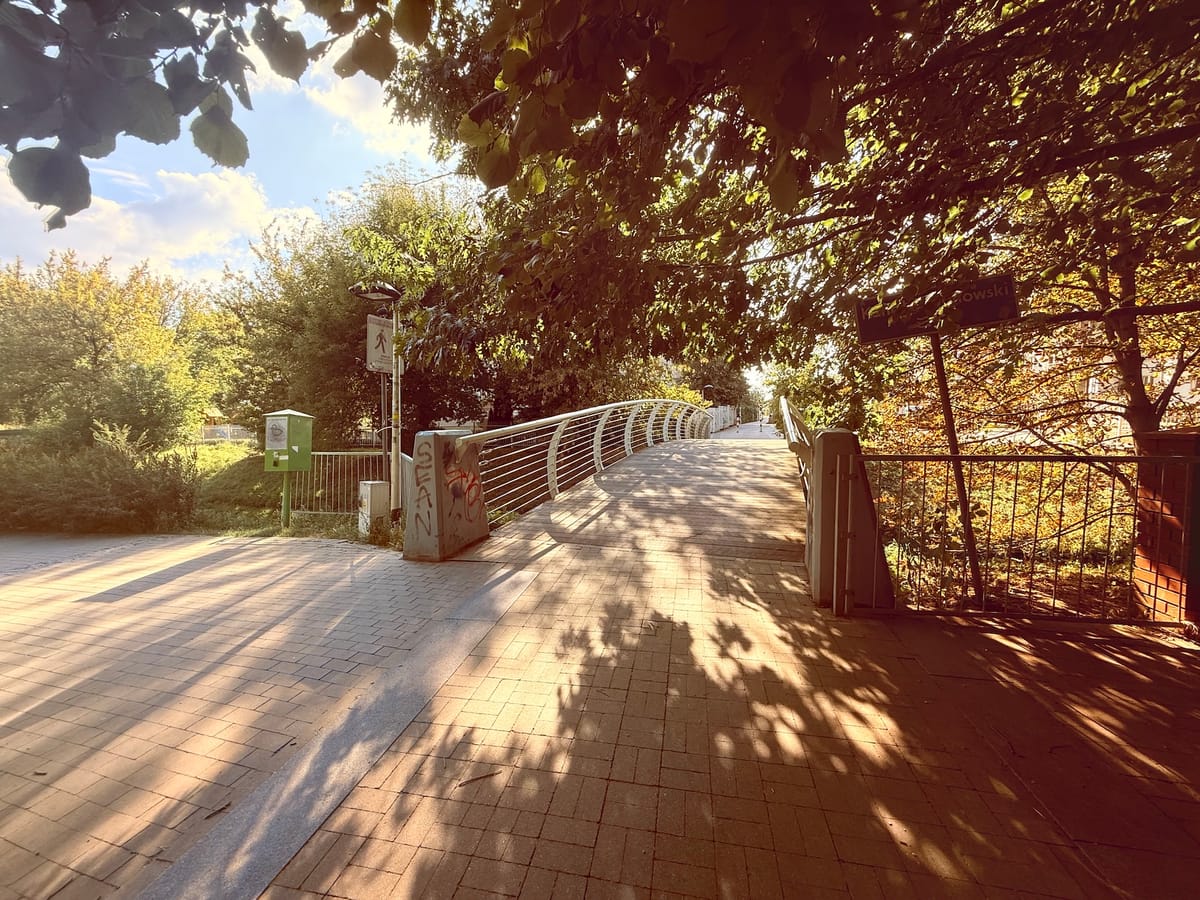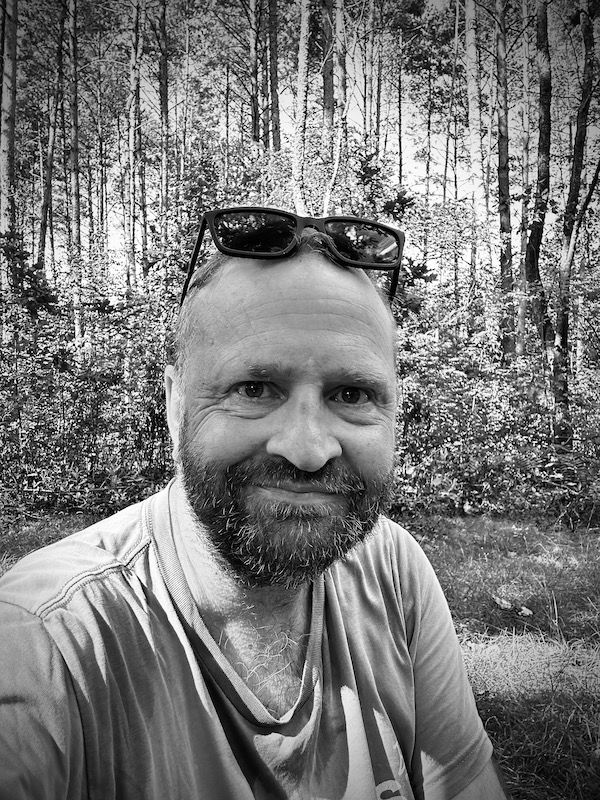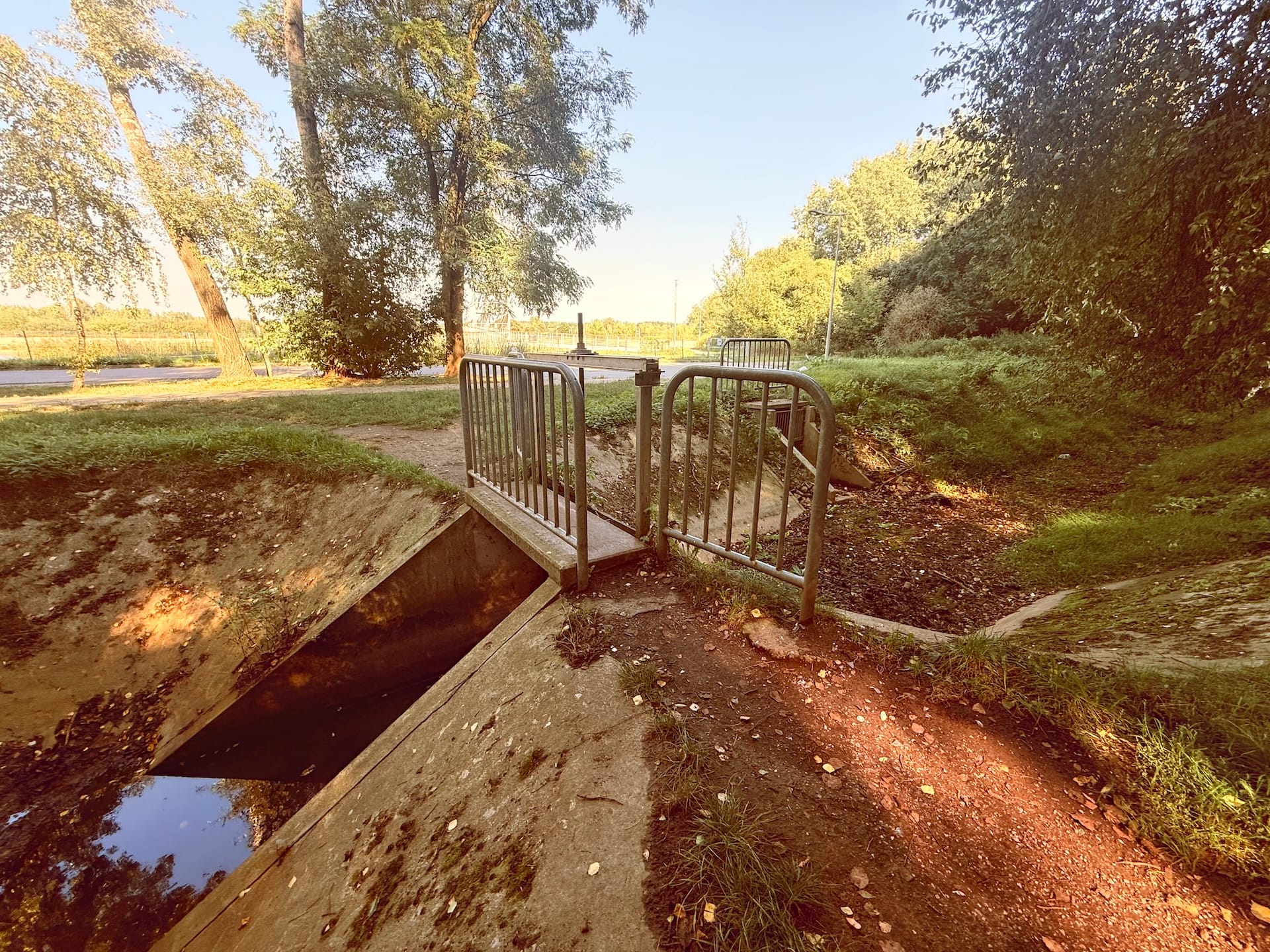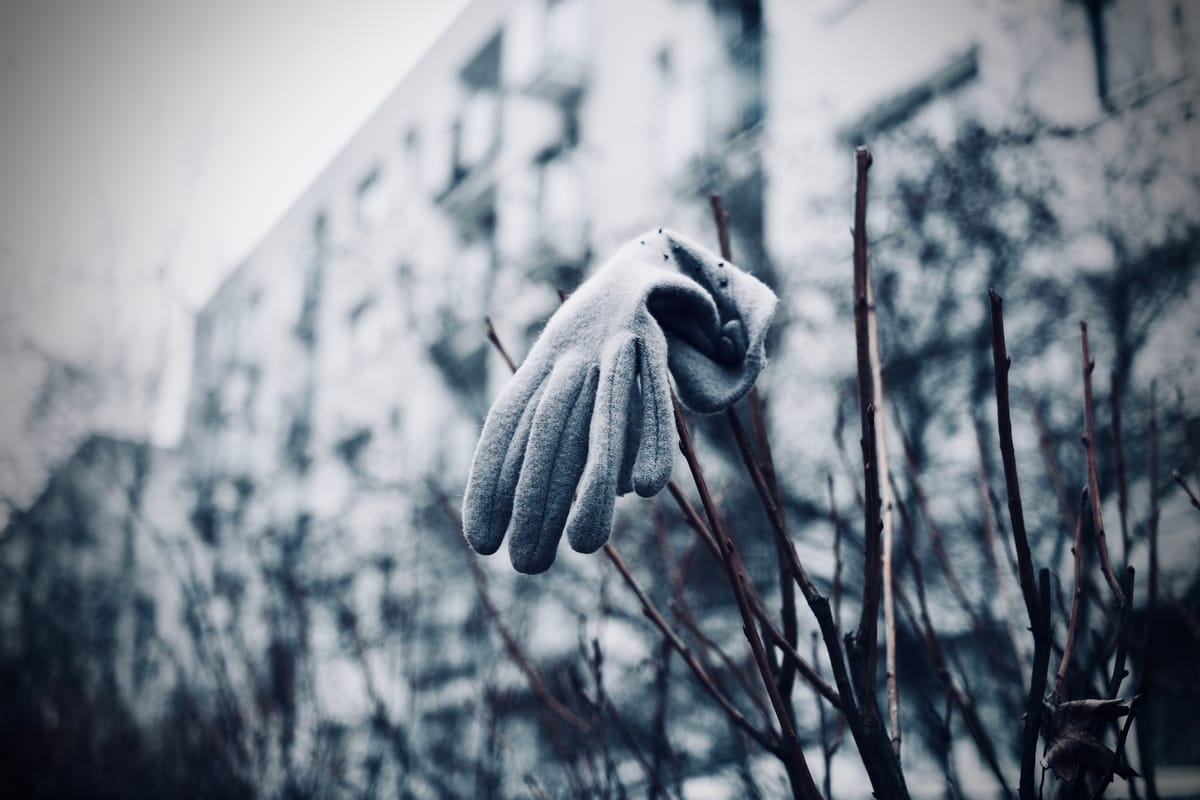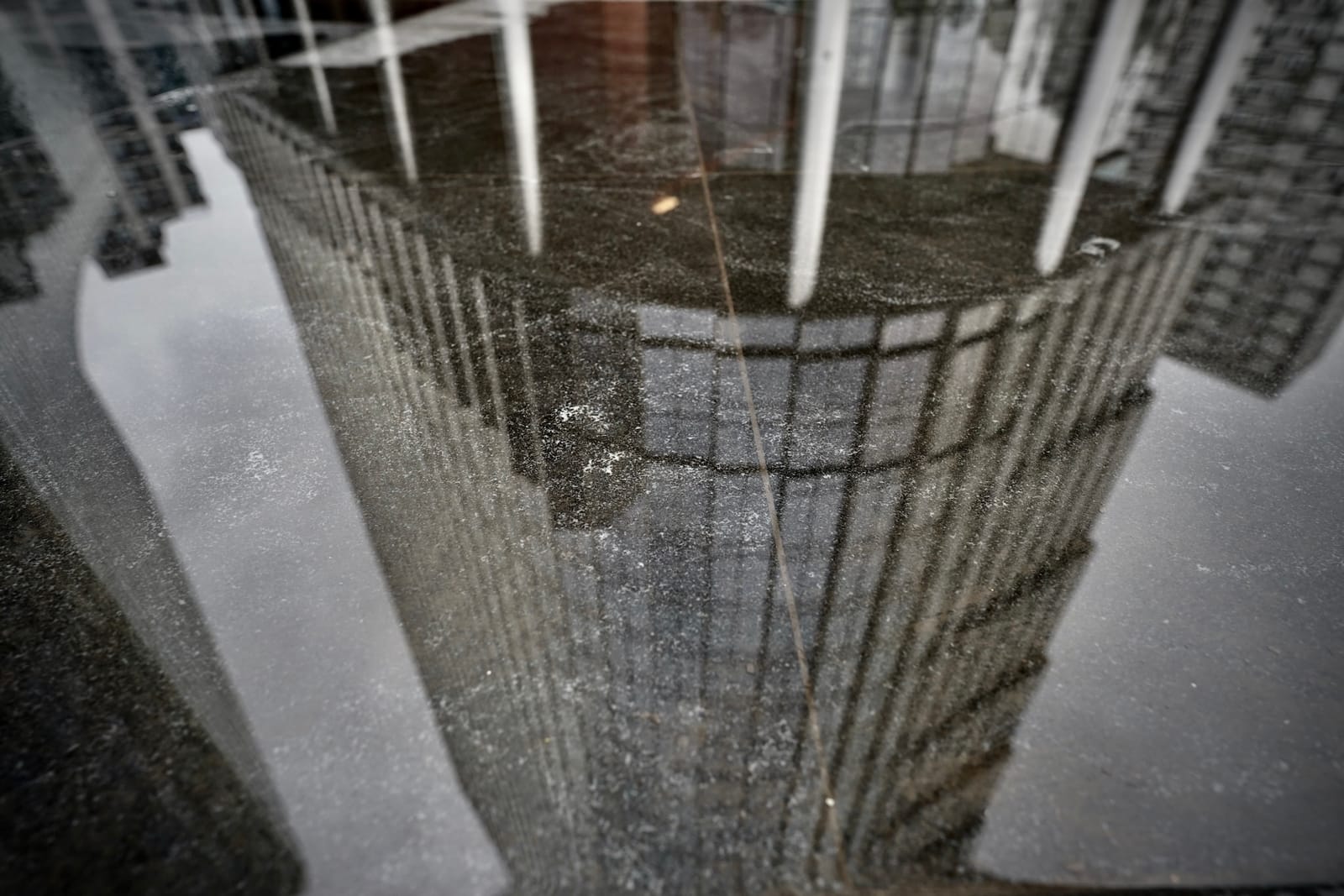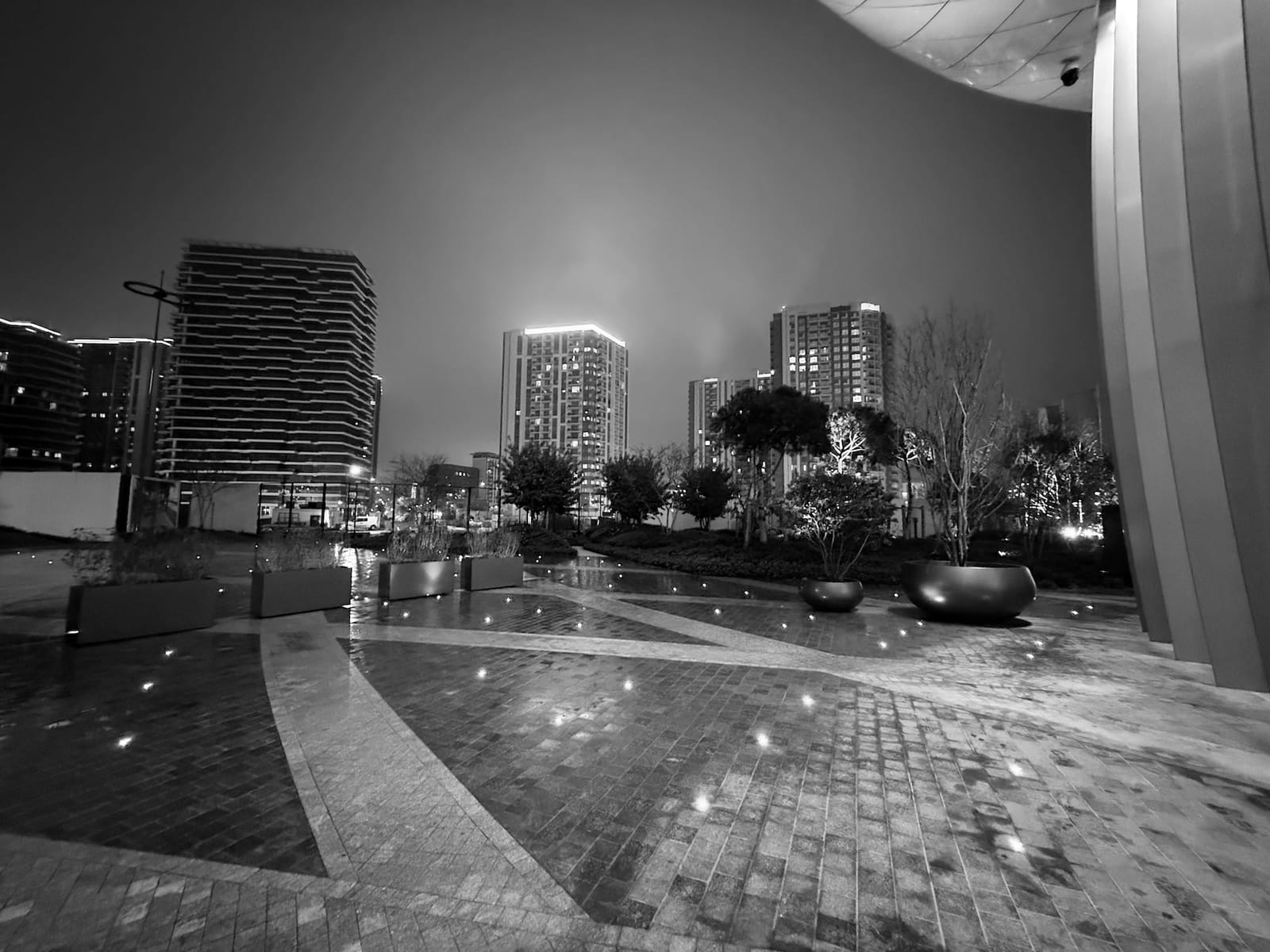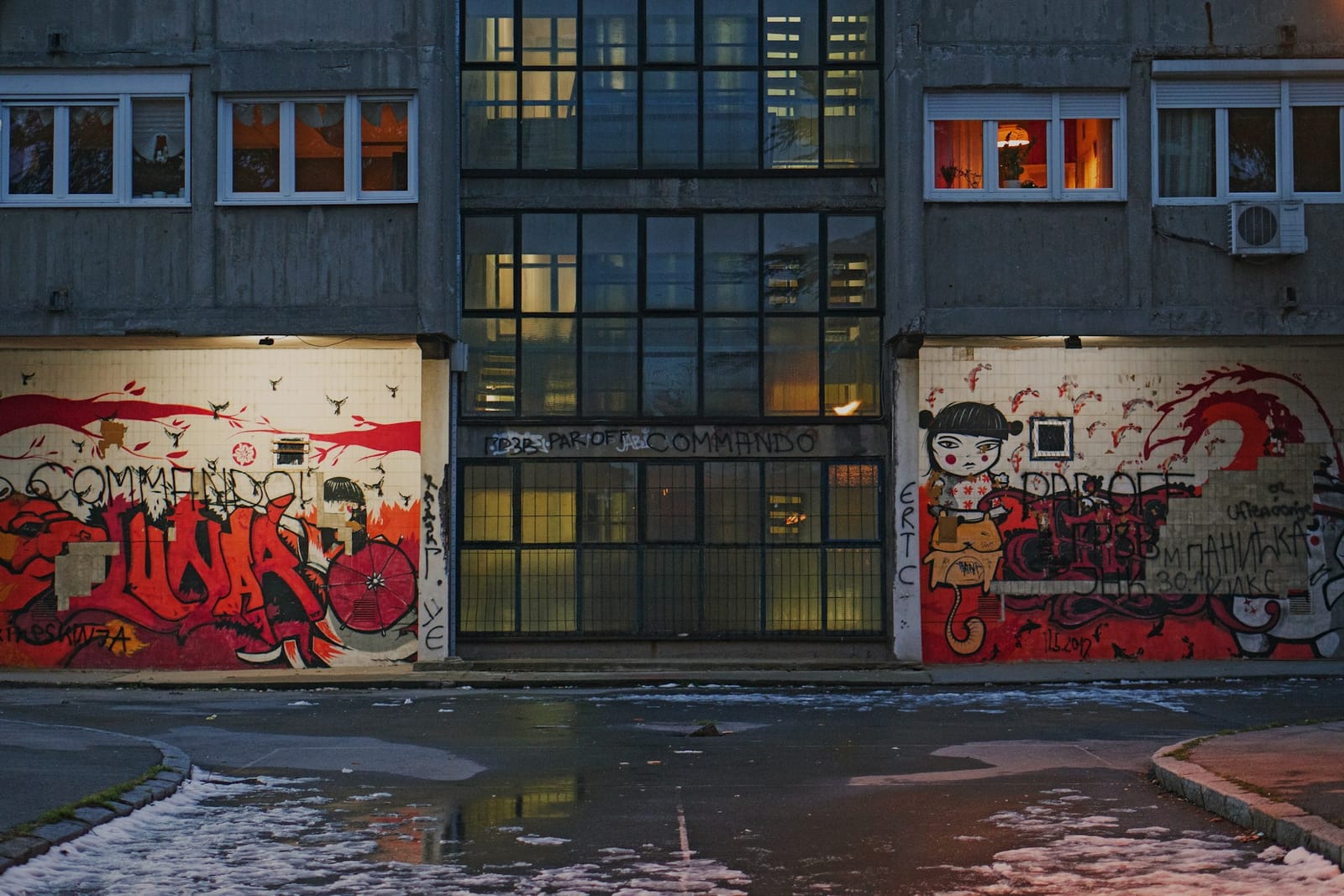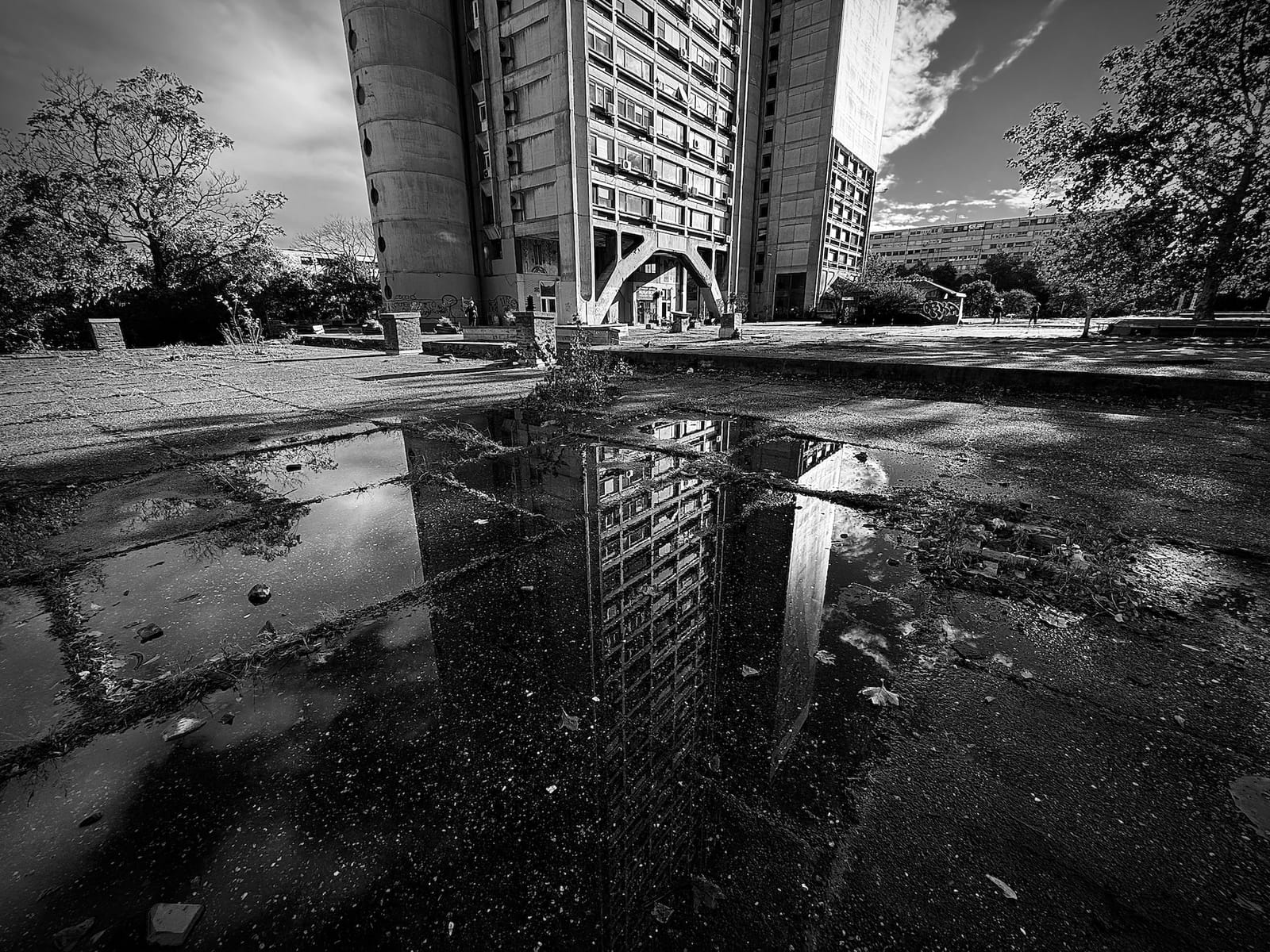Today was one of those blessed Monday afternoons in Warsaw when autumn light falls just so, transforming ordinary streets into something golden and inviting. I found myself with that rarest of urban gifts - time without agenda, freedom without destination. The kind of afternoon that whispers possibility rather than obligation.
On a whim, I decided to complete my walk along Kanał Bródnowski. I'd first spotted it before on the map, a modest blue line threading through the city, and always planned on tracing it's path. Today, something about its quiet persistence called to me again. Perhaps it was simply the joy of having nowhere else to be, or maybe the canal itself was extending an invitation I'd finally learned to hear.
What I discovered along that waterway earlier would challenge everything I thought I knew about navigating urban space. Philosopher Alfred Korzybski warned us that "the map is not the territory," yet we all still seem to persist in mistaking our abstractions for reality itself. Nowhere is this more evident than in our digital age, where we navigate the world through the sanitised geometry of Google Maps, reducing the complex phenomenology of place to utilitarian data points: roads, buildings, and those curious blank patches of green that suggest nothing more than "nature goes here."
But what happens when we step off the prescribed routes? When we follow the forgotten waterways that predate our urban logic? This afternoon, I discovered that the most profound journeys begin not with destination planning, but with surrendering to the psycho-geographical pull of the overlooked.


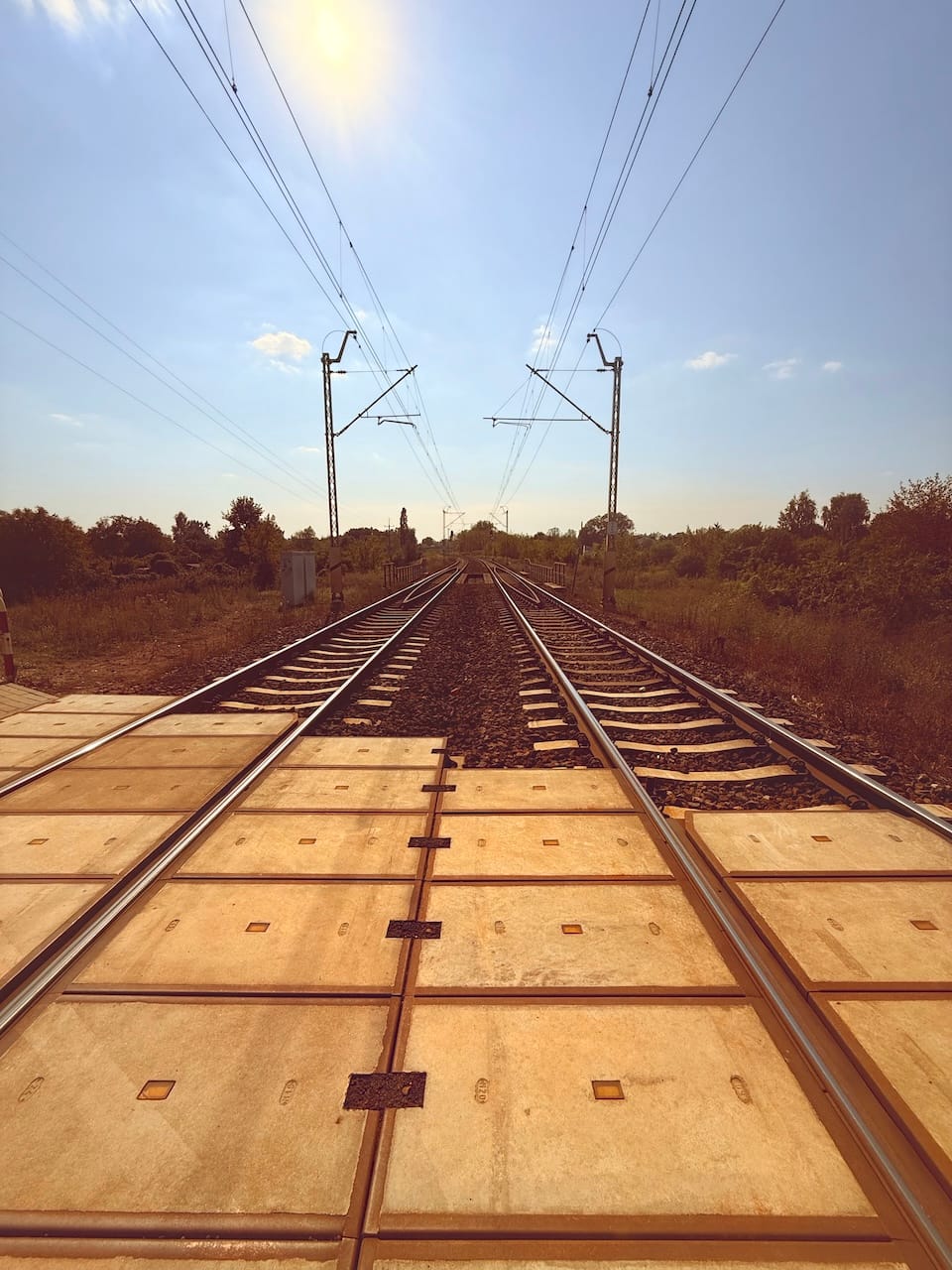
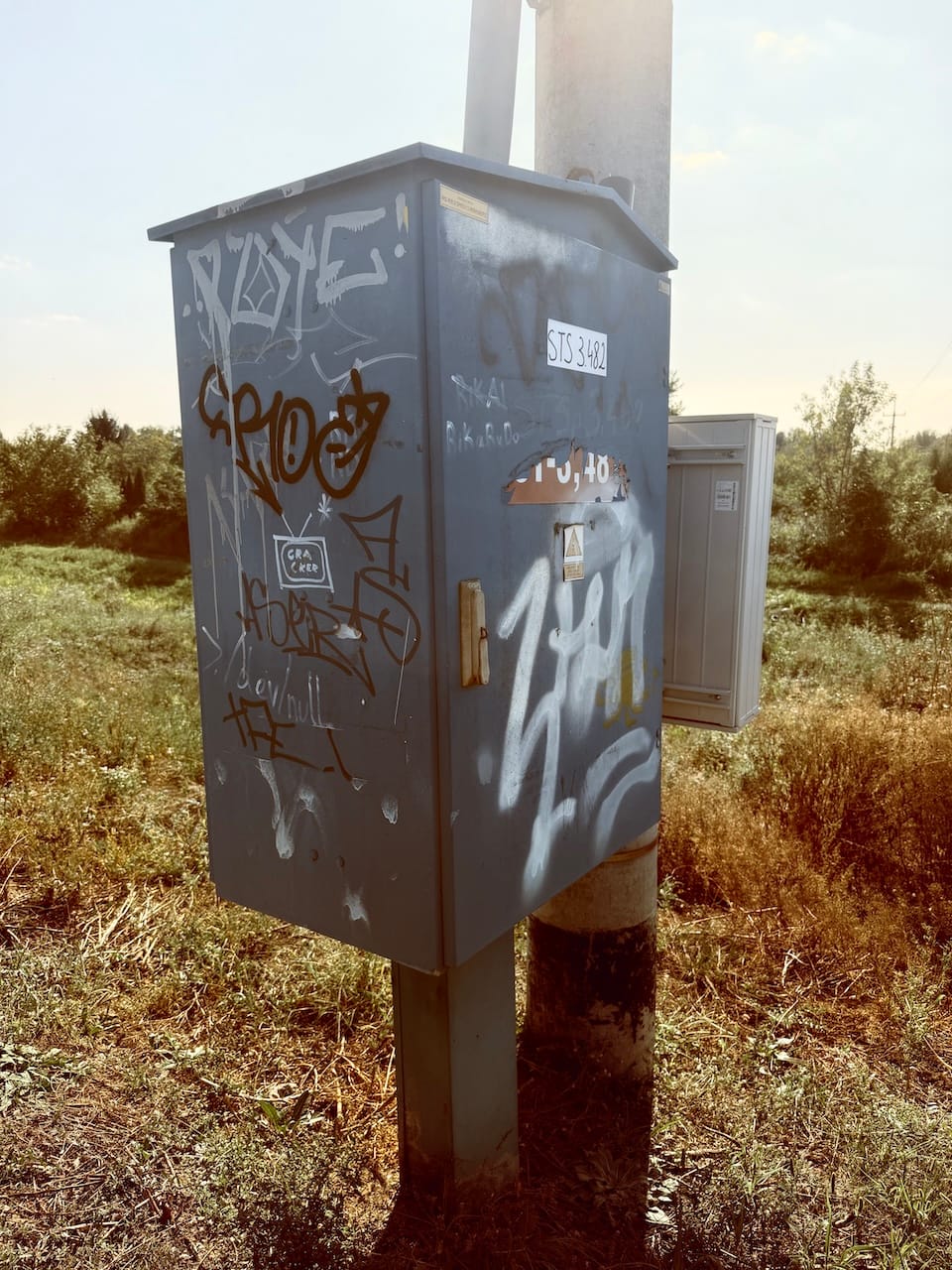
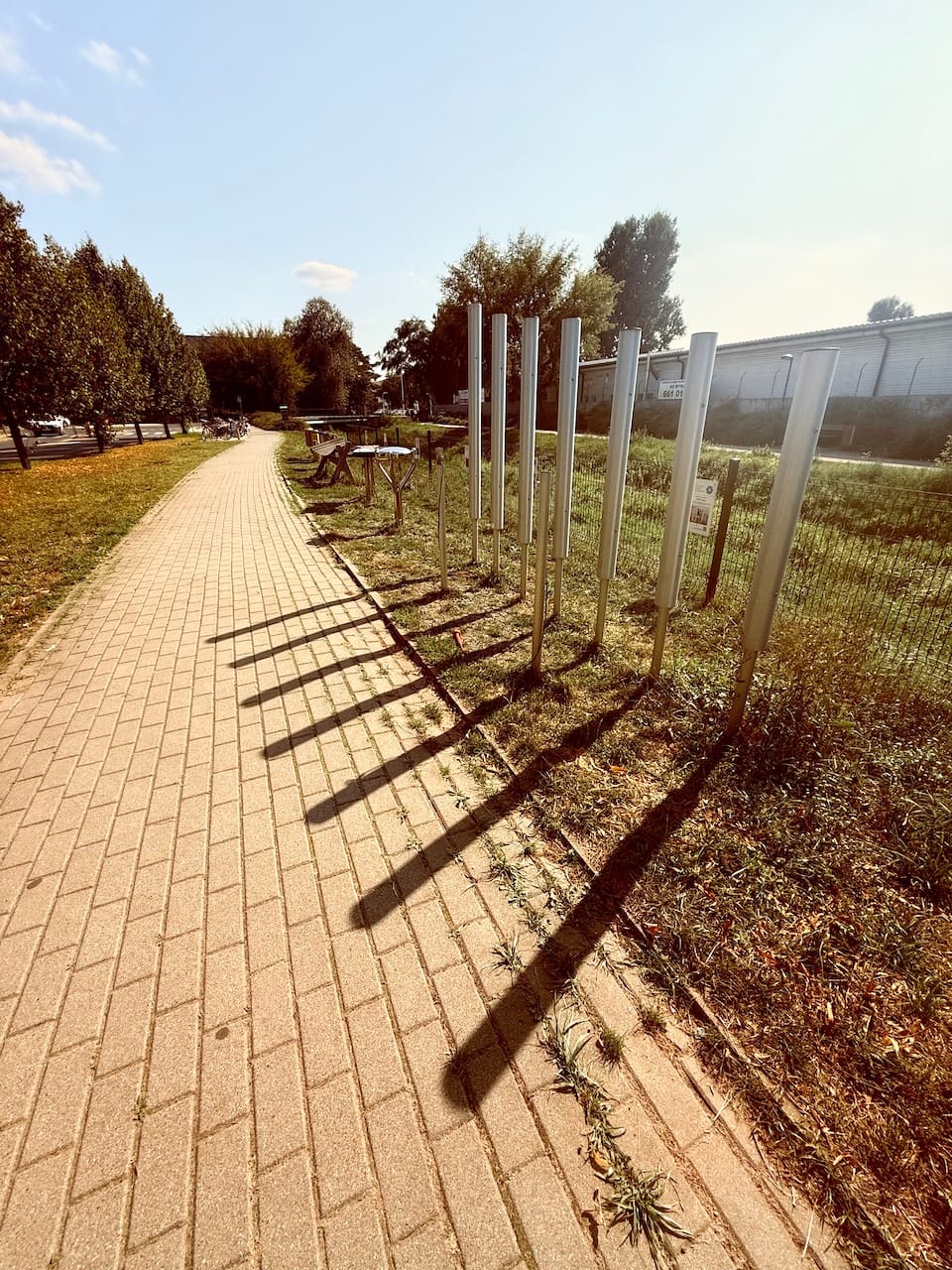
The Violence of Cartographic Reduction
Our contemporary maps are exercises in what my old pal Jean Baudrillard might recognise as pure hyperreality - representations so removed from their referents that they begin to substitute for direct experience. The digital interface flattens Warsaw into a navigable grid, transforming the lived city into what de Certeau called "a readable text." The aforementioned Kanał Bródnowski appears as little more than a blue line threading through undifferentiated green space, a minor tributary in the grand infrastructure of urban efficiency.
This cartographic violence - for that is what it is - strips away the temporal layers that make a place truly itself. The ancient forest that I discovered and hour or so into my walk becomes merely "green space," as if centuries of ecological succession, the slow archaeology of root and soil, the accumulated songs of countless birds, could be reduced to a colour on a screen. The map offers the illusion of knowing while systematically destroying the conditions for genuine encounter.
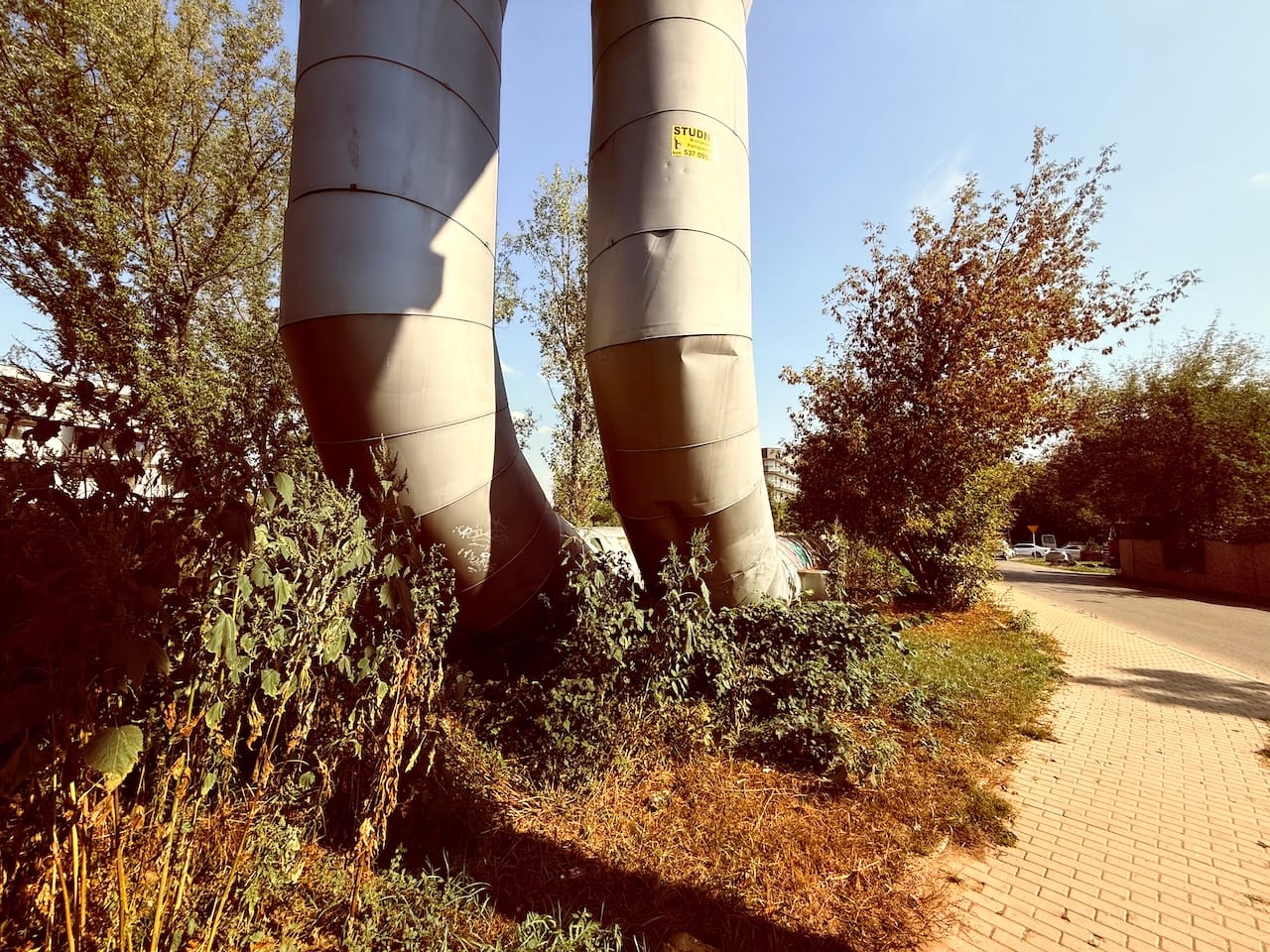
The Drift: Following Water's Logic
Guy Debord, author of The Society of The Spectacle and the Situationists understood that cities contain their own hidden geographies, networks of meaning that run counter to the imposed order of urban planning. The dérive - the drift - becomes a form of resistance, a way of reading the city through its own unconscious desires rather than its official narratives.
Kanał Bródnowski offers itself as the perfect guide for such a drift. Unlike the rational grid of streets that impose human logic upon landscape, waterways follow older laws: gravity, geology, the patient work of erosion. To follow a canal is to trace a pre-urban memory, to let the landscape itself determine the terms of encounter.
The decision to walk along this particular waterway was not really a decision at all, but rather a submission to what the psycho-geographers call "the call of the terrain." The canal appeared on my map as a minor detail, yet something about its quiet persistence - the way it cut through the city without announcing itself - suggested secrets worth pursuing.
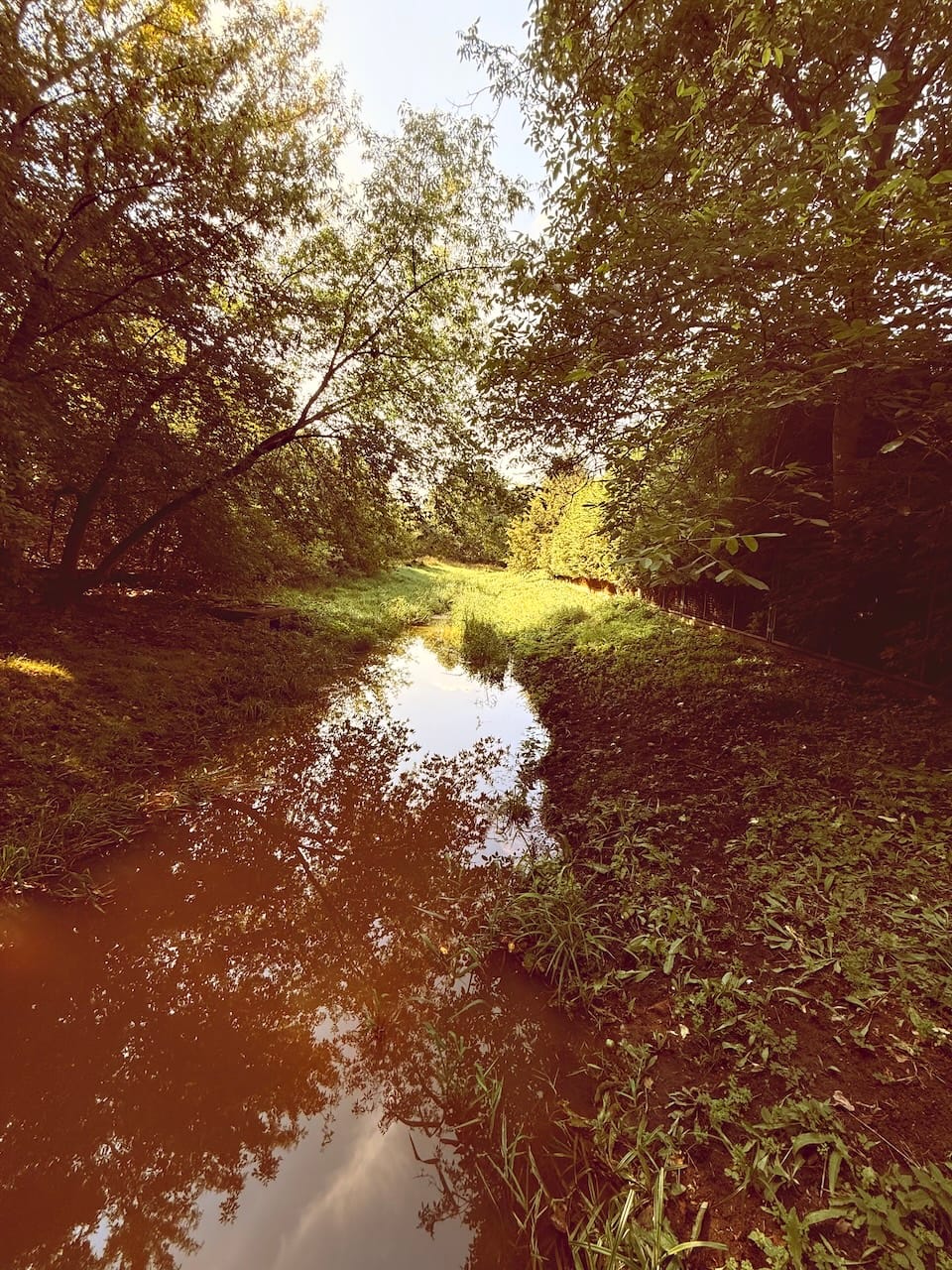
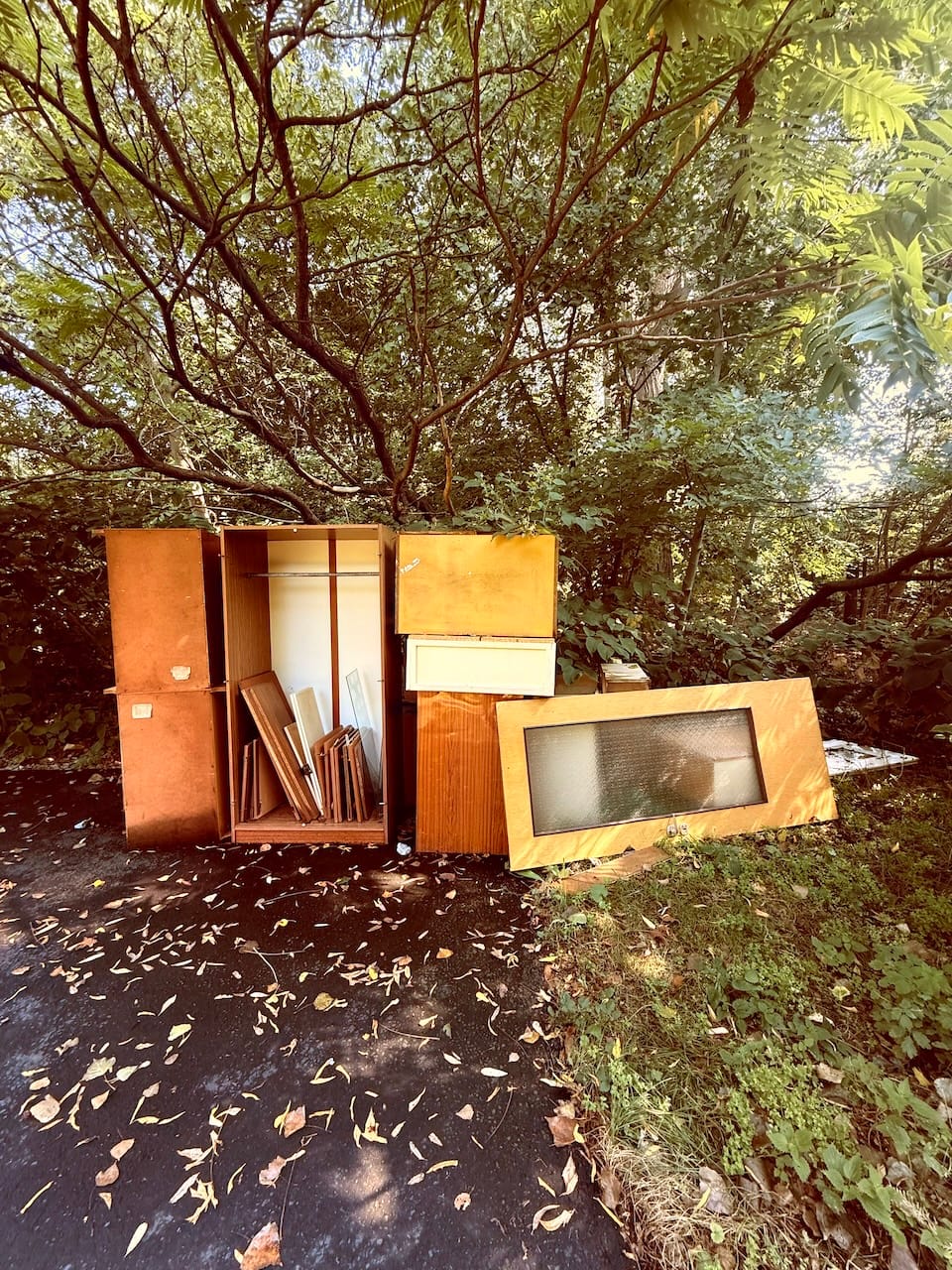
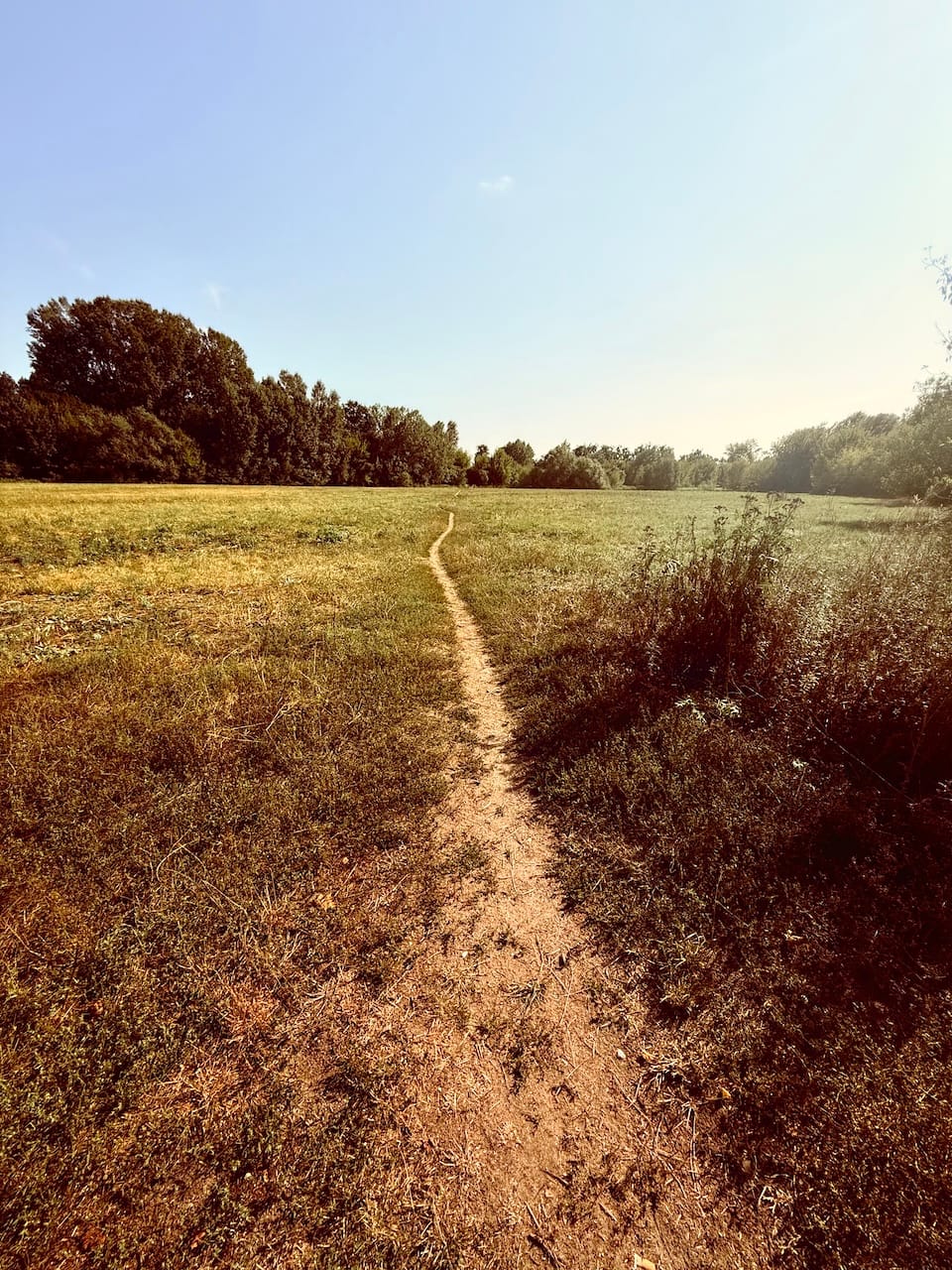
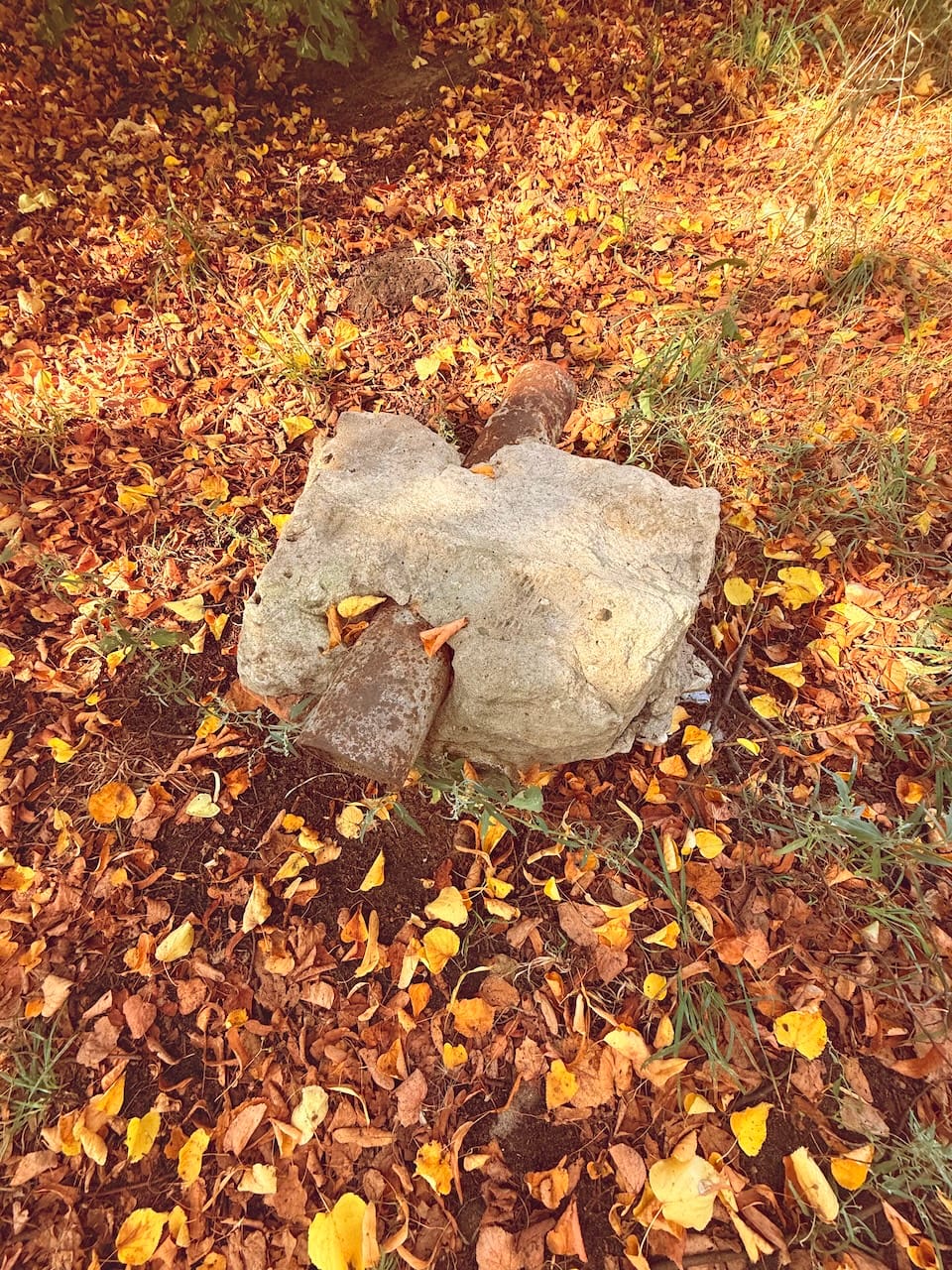
The Forest That Shouldn't Exist
What struck me first today was the sound - not the urban hum I'd expected, but birdsong. Deep, layered, complex. The kind of acoustic environment that speaks of ecological time rather than human time. The blank green space on my map began to reveal itself as something far more intricate: an ancient forest that had somehow survived the city's expansion, its boardwalks threading between trees that remembered Warsaw before Warsaw remembered itself.
This was the territory asserting itself against the map's reduction. Every step deeper into this hidden landscape felt like a form of temporal travel, not back to some pristine past, but forward into a more complex understanding of what urban space might contain. The forest existed in the present tense, but it carried other temporalities within it - geological time, ecological time, the slow time of growth and decay that our digital interfaces cannot measure.
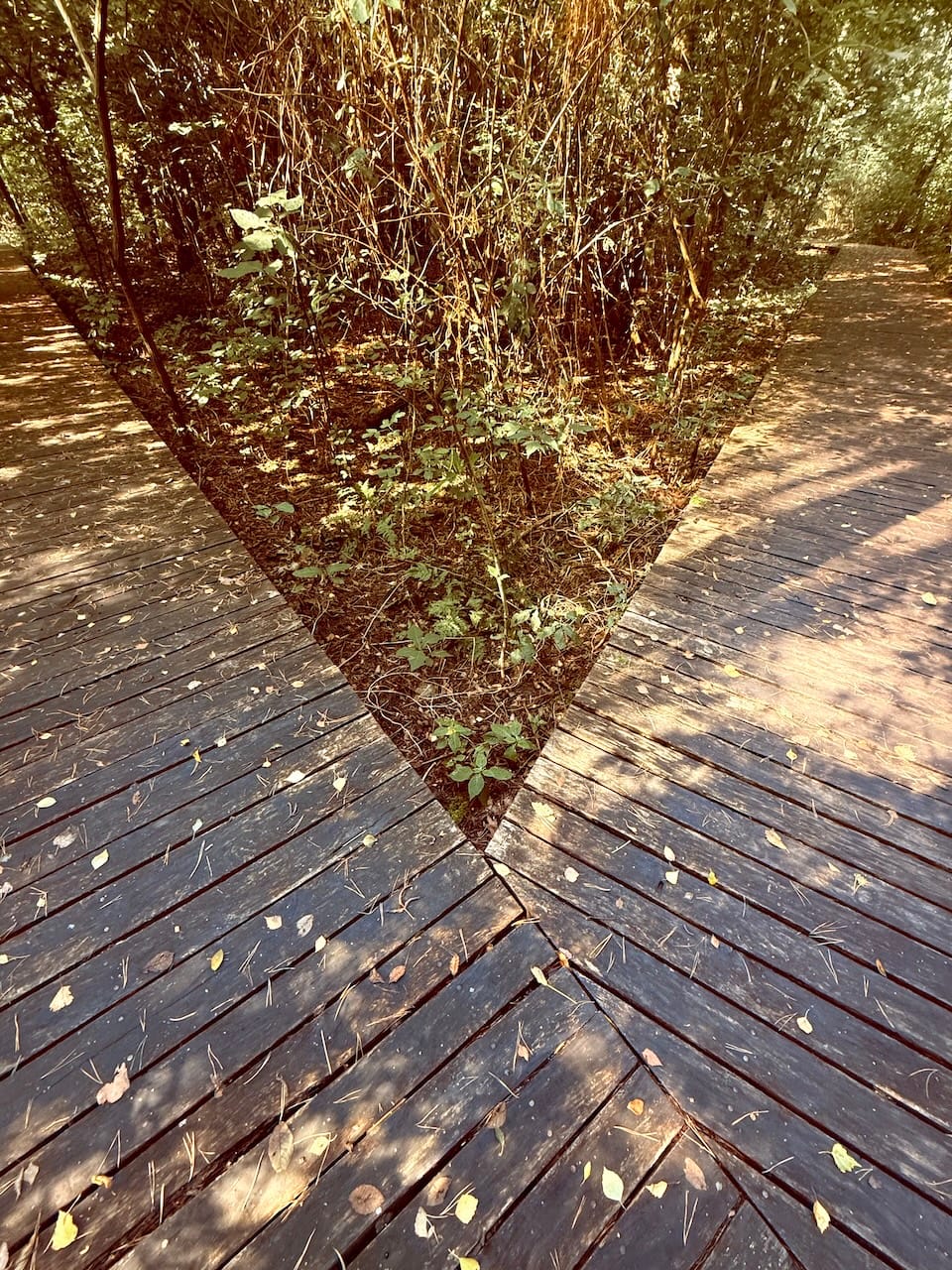
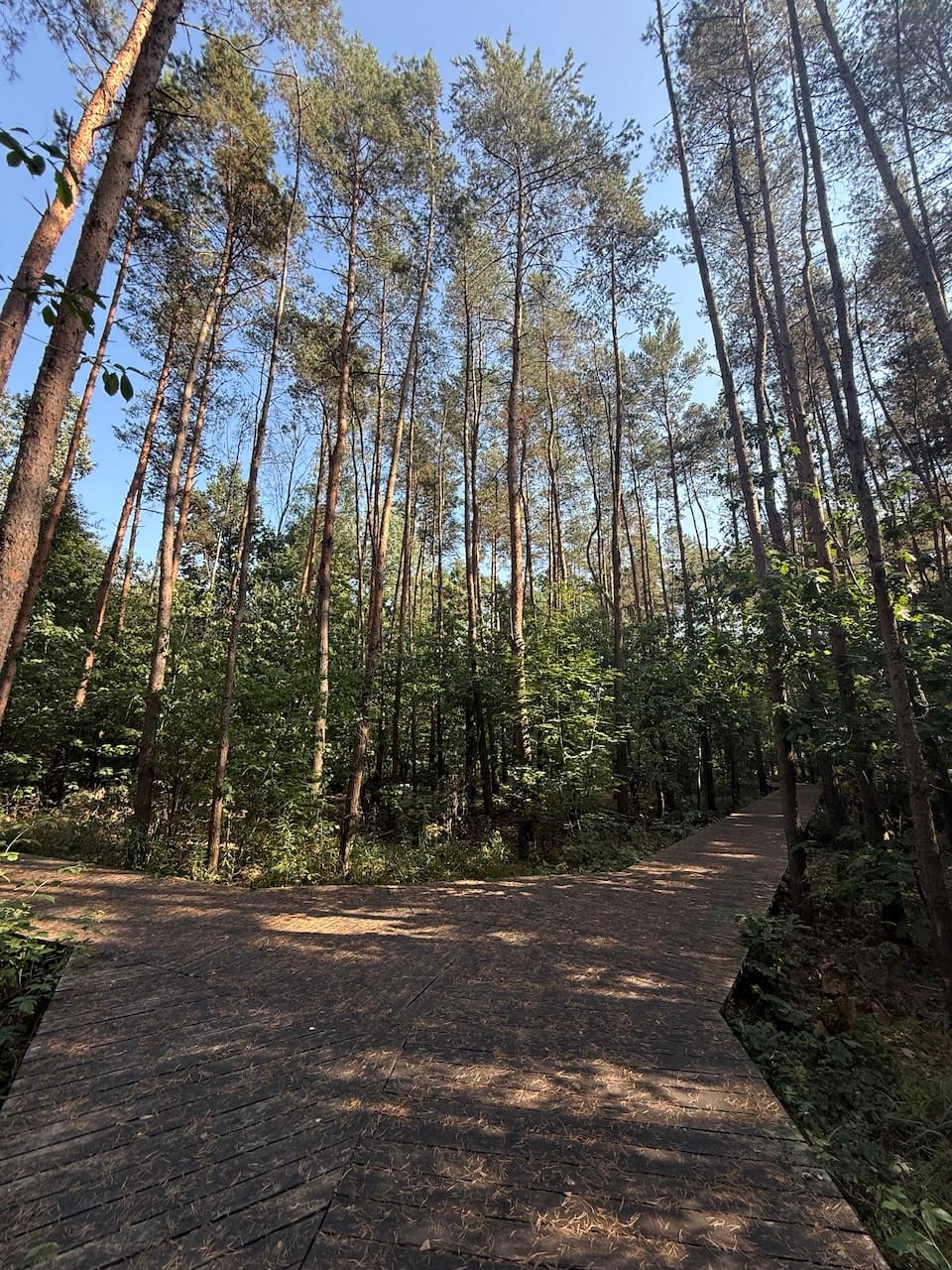
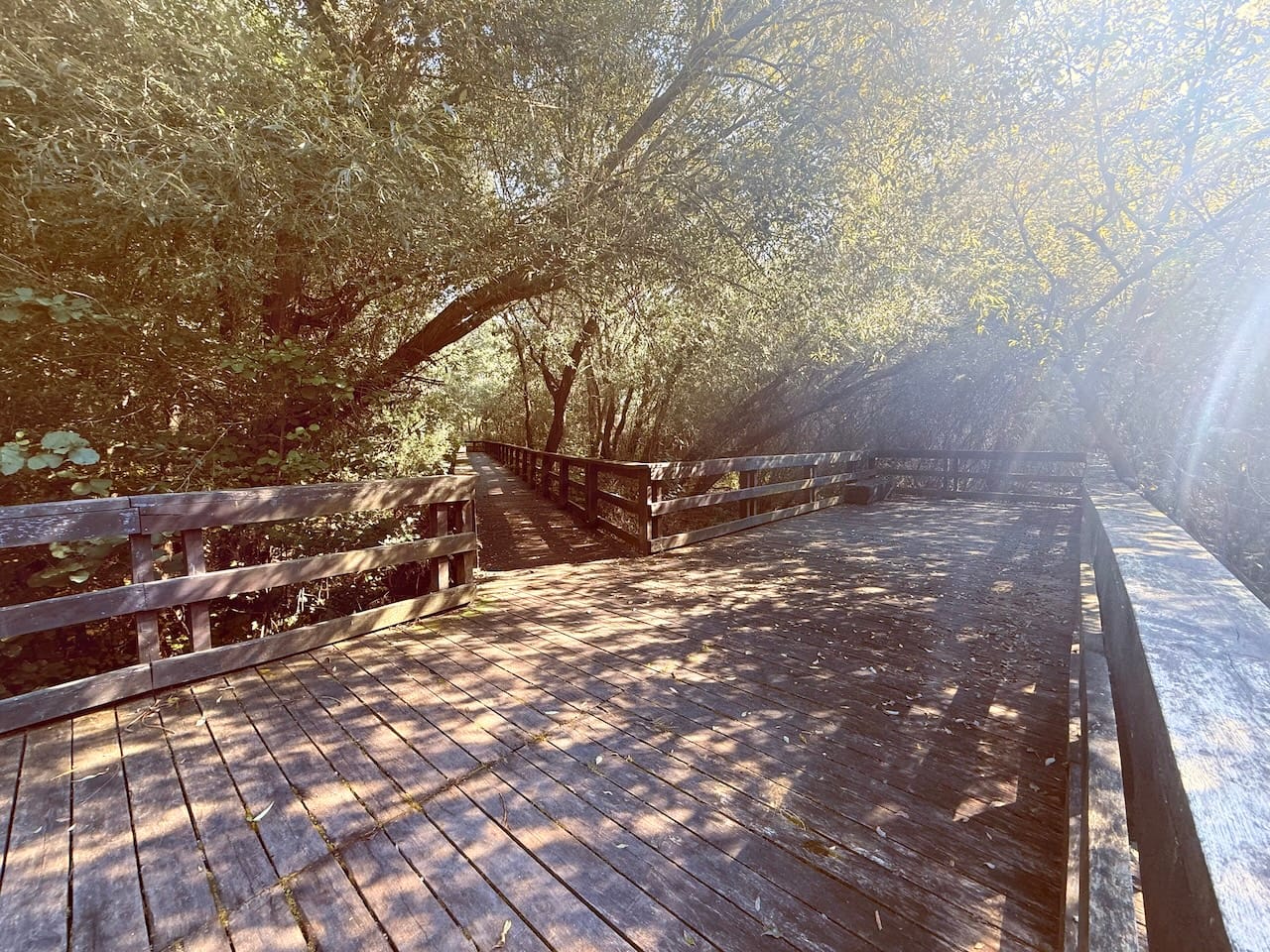
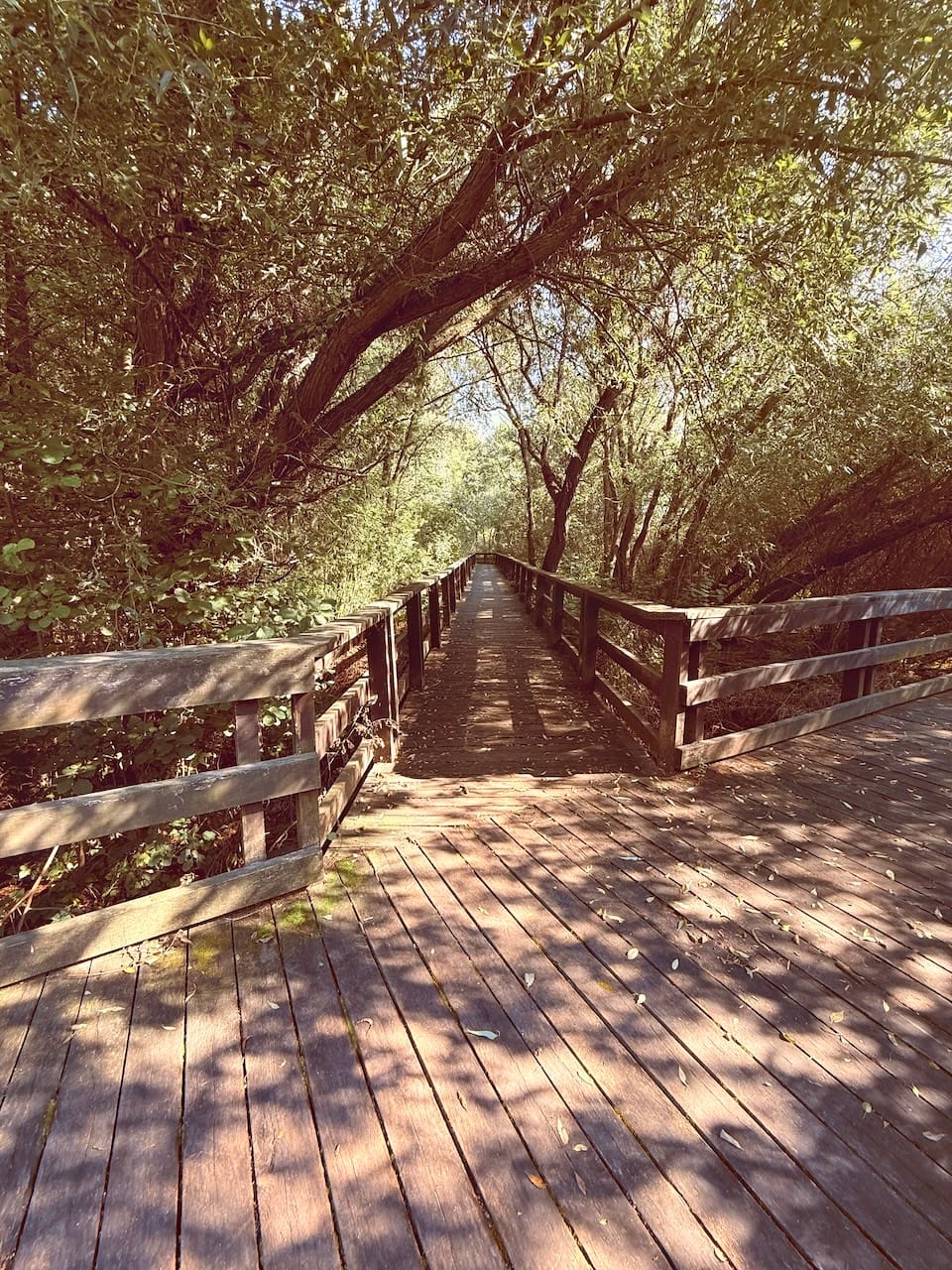

Non-Linear Discovery and the Postmodern Moment
Discovery, I realised, is fundamentally non-linear. It resists the logic of GPS navigation, the point-A-to-point-B efficiency that governs our movement through space.
Real discovery happens in the gaps between intention and encounter, in those moments when the world reveals itself as more complex than our representations suggest.
This is perhaps what makes my experience so fundamentally postmodern. You see, we live in an age of total information, where every location can be Google-Earthed, Street-Viewed, and Yelp-reviewed before we arrive. The idea that a city like Warsaw - mapped, surveyed and digitised - could still contain genuine secrets feels almost transgressive. Yet here was proof that the hyperreal has not entirely colonised the real, that territories of authentic surprise persist within our mediated landscape.
The ancient forest along Kanał Bródnowski exists in what I'm inclined to call a state of productive invisibility. It is technically mapped, technically known, yet it remains hidden in plain sight - overlooked precisely because our digital tools train us to see through rather than to see. The GPS guides us past such places, around them, treating them as obstacles to efficiency rather than destinations worthy of lingering.
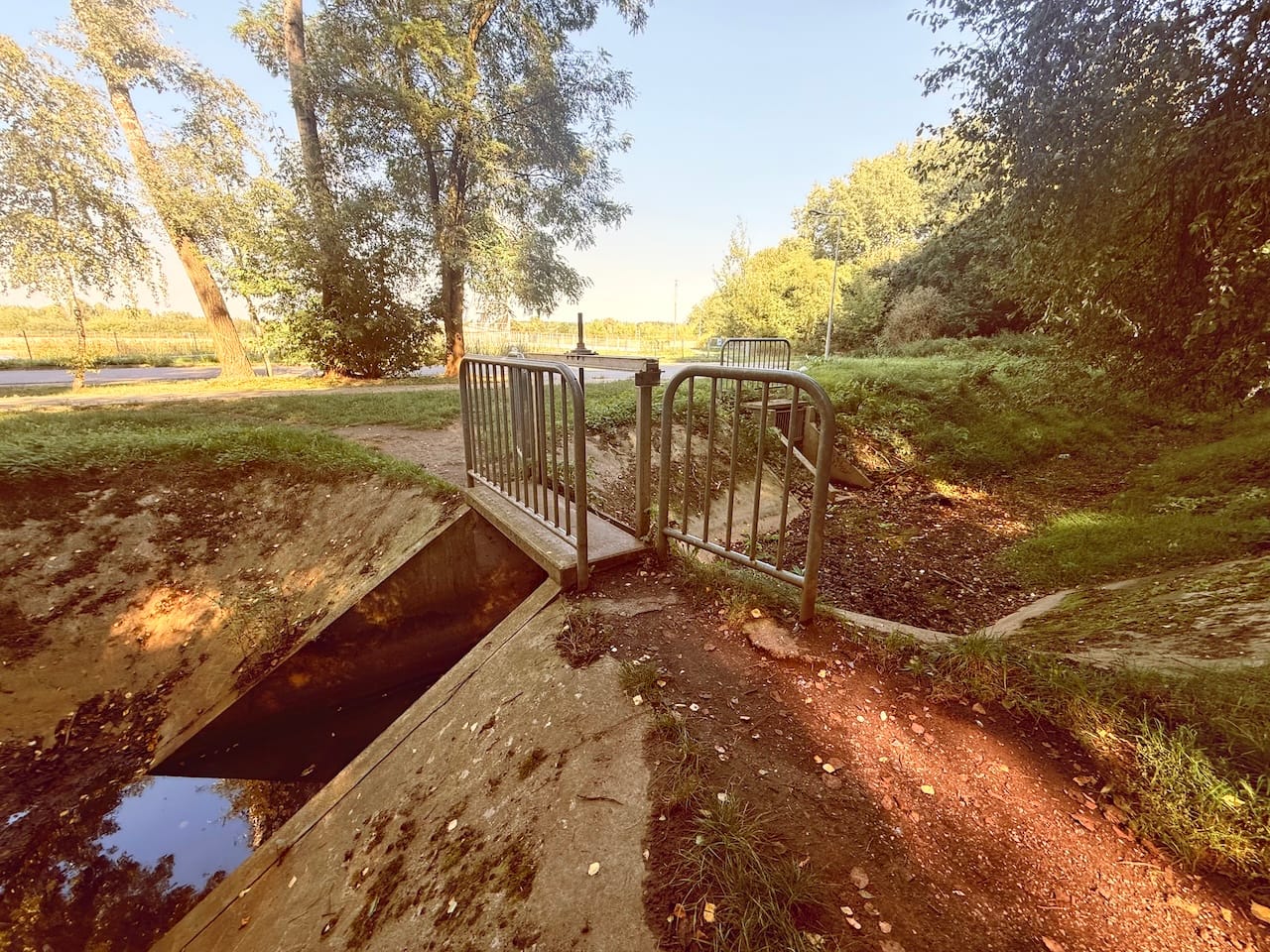
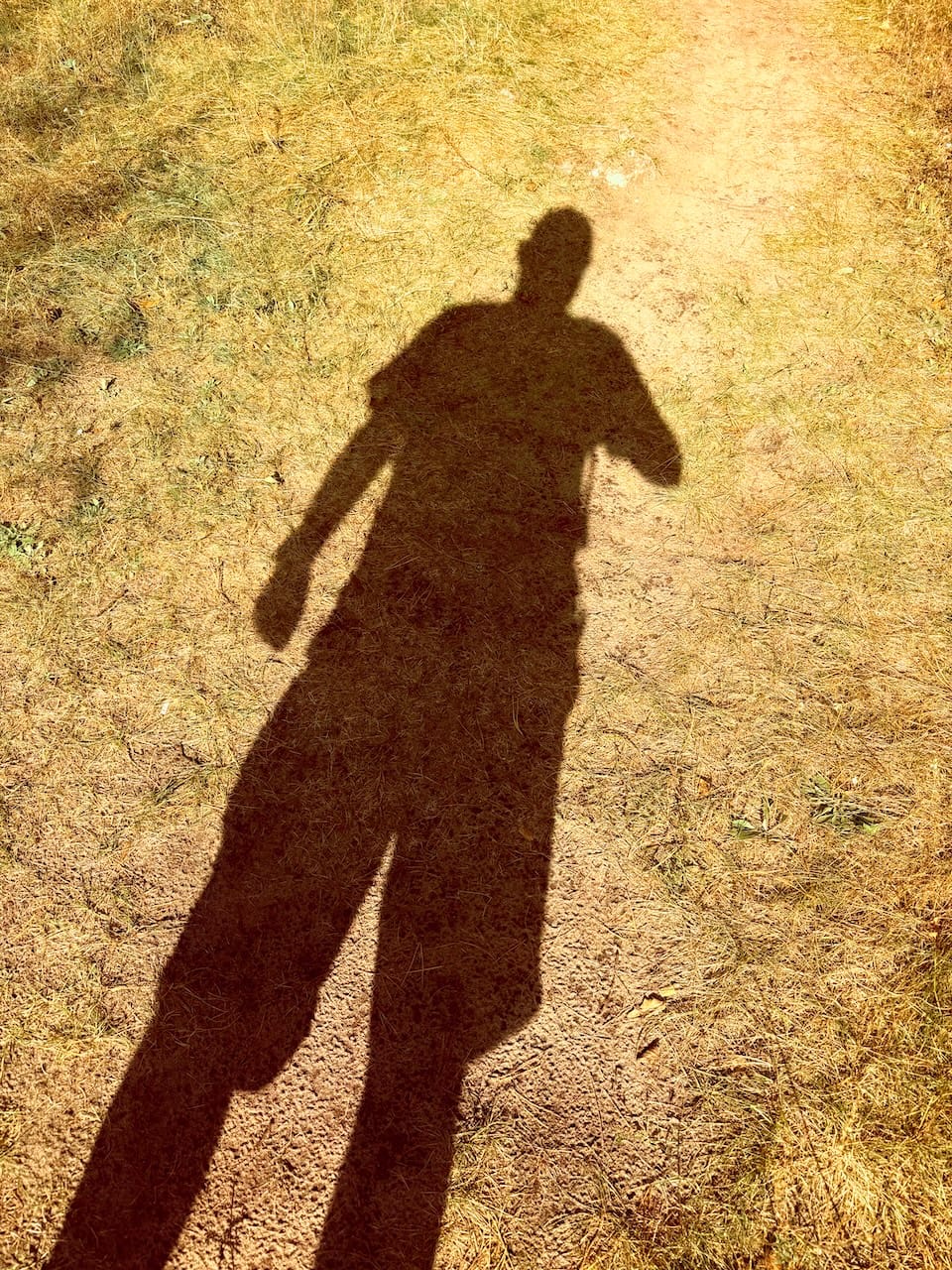
The Canal as Palimpsest
Waterways are the city's memory made visible. They persist across political changes, economic transformations, the rise and fall of human plans. Kanał Bródnowski carries within its flow the traces of all the Warsaws that have risen and fallen along its banks - the medieval settlement, the imperial city, the wartime ruins, the socialist reconstruction, the contemporary metropolis.
To follow such a waterway is to read the city as palimpsest, those ancient texts where earlier writings show through despite attempts at erasure. Each bend in the canal reveals new temporal layers: industrial remnants, ecological succession, human interventions, natural persistence. The boardwalks themselves become part of this layered text - contemporary infrastructure that enables encounter with deeper histories.
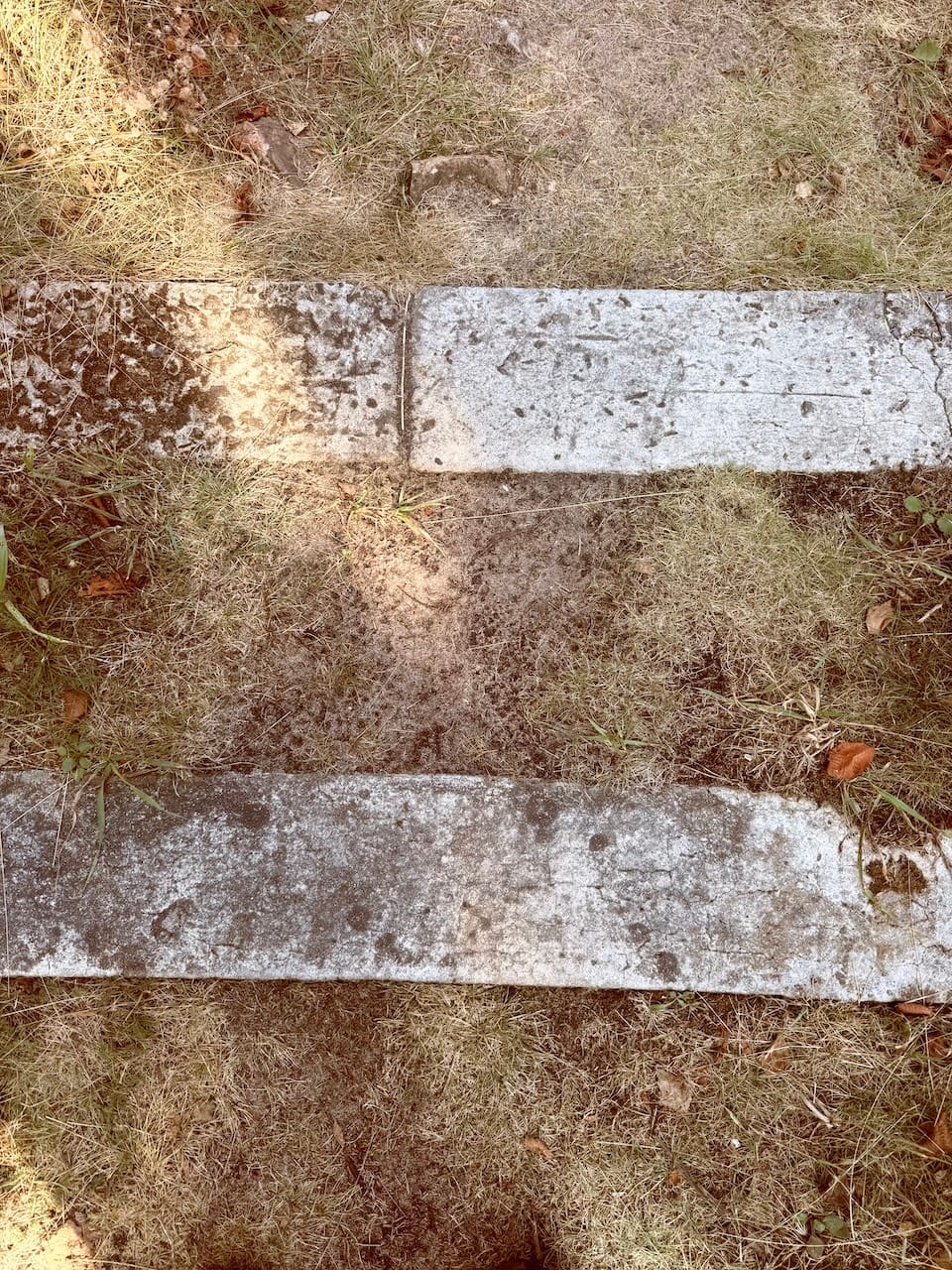
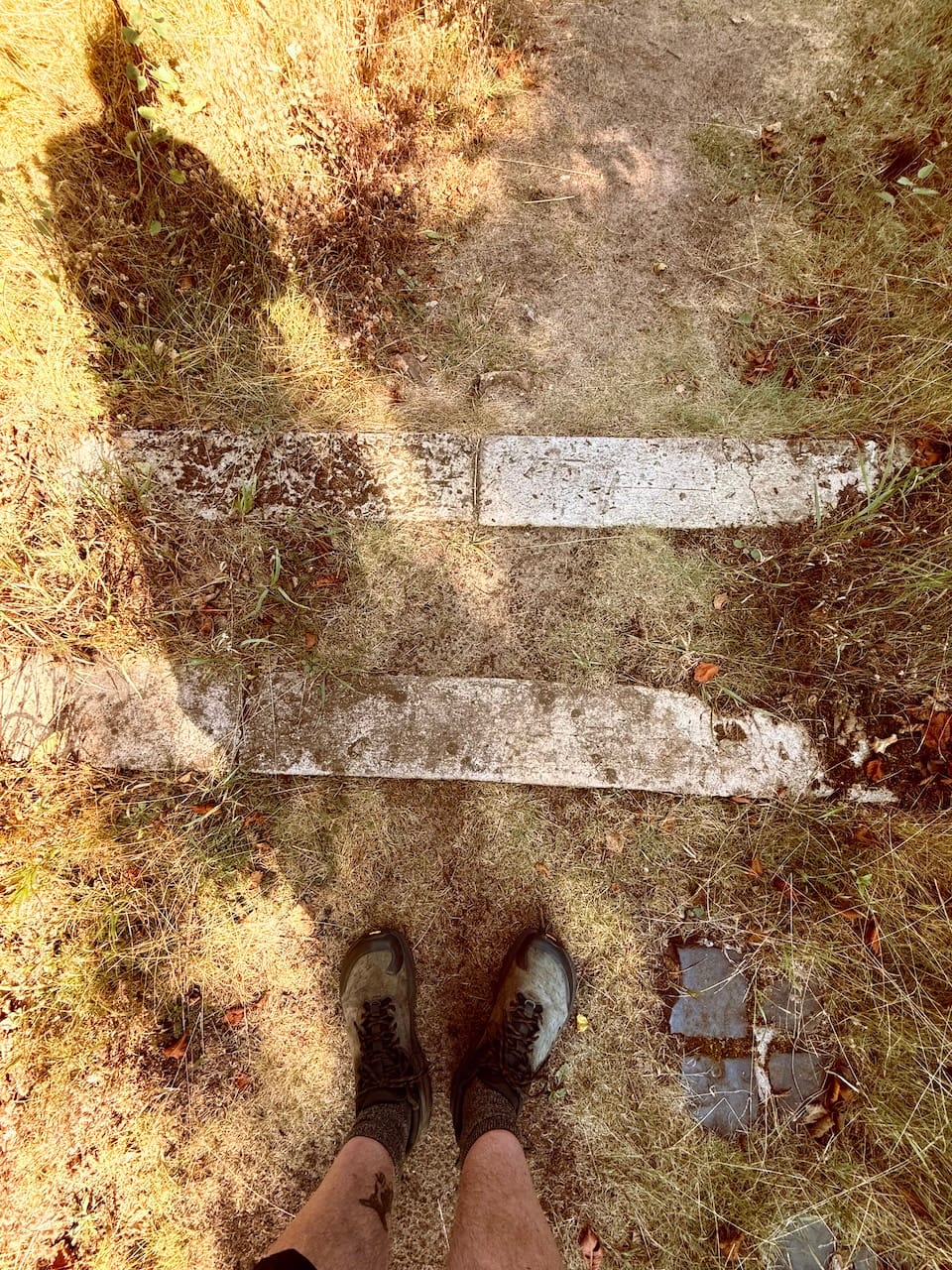
The Joy of the Unplanned
So, what transforms a simple walk into a magical experience? Perhaps it is precisely this: the recognition that the world exceeds our plans for it. The joy I felt in that hidden forest was not just aesthetic pleasure, but something more fundamental - the relief of discovering that reality remains more interesting than our representations of it.
In our age of algorithmic recommendation and curated experiences, there is something radical about random encounters. To follow a stream because it is there, to let curiosity rather than efficiency guide movement, to discover that the blank spaces on our maps contain their own rich geographies - this becomes a form of resistance to the total administration of experience.

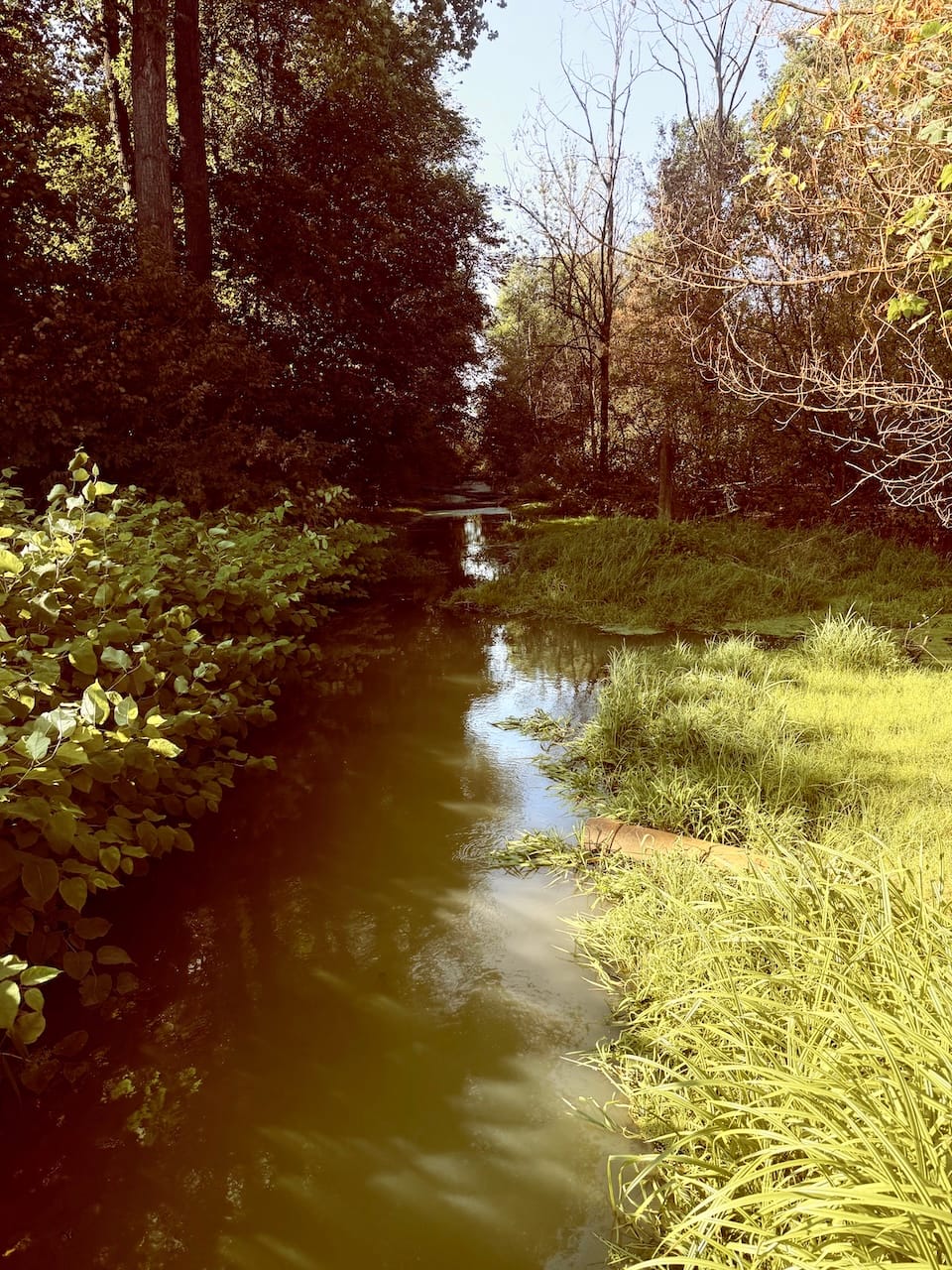
A Conclusion: Territories of Wonder
The disconnect between map and territory is not a problem to be solved through better mapping technologies. It is, rather, a space of possibility - the gap where wonder lives. Our digital tools, for all their precision, cannot capture the qualitative density of place: the way light filters through ancient trees, the particular silence that follows birdsong, the sense of temporal layering that makes a forest feel simultaneously present and eternal.
Kanał Bródnowski taught me today that the most meaningful discoveries happen not when we follow our plans, but when we allow ourselves to be guided by the deeper logic of landscape. The canal had been there all along, marked on every map, visible in satellite images. Yet it took physical presence, the slow time of walking, the willingness to follow rather than lead, to transform a blue line on a screen into a pathway toward the genuinely unexpected.
In a world increasingly mediated by digital interfaces, such moments of direct encounter become precious. They remind us that beneath the hyperreal city of our screens lies another city entirely - one that can only be discovered by putting away the map and following the quiet water wherever it leads.
Quiet waters aside, in true, time-honoured Warsaw style, upon reaching my destination, the nearest bus stop was Utrata: and the 138 was waiting to take me across the entire city to Bokserska, and the bus stop outside my building. Got to love that.
More on Kanał Bródnowski
